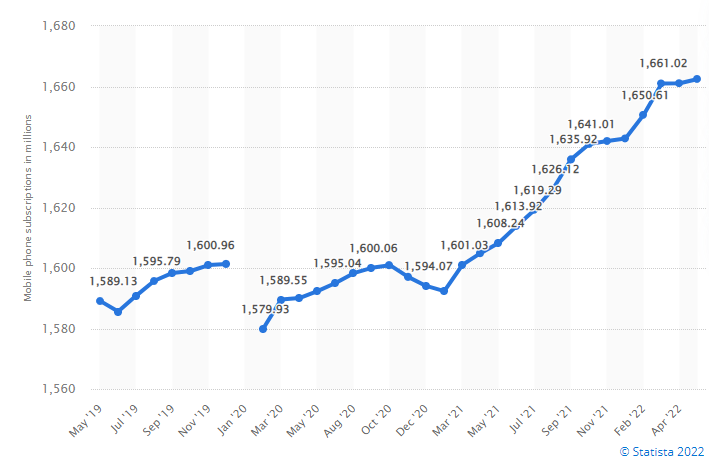Social media has long been one of the most important communication channels in China, with the country now having the world’s largest number of social media users at over 983.3 million. However, the censorship of the Great Firewall of China makes it very different from the West in social media platforms, and how it works, which makes marketing in China extremely challenging. Understanding how Chinese social media works can help you step into the door of the Chinese market and make your mark on one of the fastest-growing economies in the world.
Kepios analysis indicates that China’s internet penetration rate stood at 70.9 percent of the total population at the start of 2022. The internet users in China increased by 35.9 million in one year. There were 983 million social media users in China this January, this number increased by 52.5 million between 2021 and 2022.
Social media usage in China
In China, social media is used by 68 percent of the population. In 2022, the number of active social media users increased by 5.6 percent. Social media has become one of the most crucial parts of regular internet users in China. People in China are increasingly using mobile devices such as smartphones and tablets instead of desktop computers. In the first quarter of 2022, WeChat, the Chinese multi-functional social media platform has almost 1.29 billion monthly active users. Follow by the second popular social media platform in China, Douyin, with 716.04 million social media users joining.
From an outsider’s perspective, it could be surprising to realize how important social media is in China’s digital landscape. Despite not having popular apps from Google or Facebook, the country’s digital ecosystem continues to flourish in a way that shapes much of China’s society, even its government. The population of China may have also contributed to its increasing dependence on social media.
Super social apps

One interesting concept that shaped social media usage in China is the concept of the super app -- the best example being WeChat. In China, an app doesn't specialize in one function alone. While that might initially be the case, like in Douyin (TikTok), that app's main function would serve as a gateway for other related functions resulting in a mix of eCommerce and social networking. A super app functions like a website with a multitude of app features inside. In China, convenience is the primary reason for developing an app. And this convenience translates to enabling daily activities such as hailing cabs, online shopping, managing finances, paying bills, and connecting with people, among other things. Therefore, apps evolved at a raging speed until the concept of the super app was born.
Freedom of expression
Another important aspect to note is that the sheer size of China's population makes it more challenging to penetrate. Tracking and observing exchanges on Chinese social media platforms is a great way for brands to build a deeper understanding of local perceptions and values, and can help avoid the risk of embarrassing and costly missteps.
Therefore brands look into social media to provide a personalized experience for users and therefore get to know their user behavior. Social media provides a grassroots-level approach to targeting users. In social media, Chinese users also have more freedom to express themselves. For many, social media sites are not just their main source of information. They can also be a source of news and can even be used to organize events and put out their own versions of events. All of these contribute to how an app can be used by a certain population and groups of people within the vast ecosystem of China users.
Top tier cities
Another unique element that contributes to an app's success and usability in China is its tier cities. This is what most businesses use to classify the market potential of cities within China such as Beijing, Shanghai, Guangzhou, and Shenzhen, to name a few. There are about a dozen first-tier cities, all the way down to over a hundred fifth-tier cities, for a total of more than 330 cities ranked by the New First-tier City Research Institute, a Chinese data provider that publishes this ranking on an annual basis.
Each tier city has its own level of development and destiny in terms of business opportunity and population. These cities shape the social media landscape of China as usage varies depending on the various social, economic, and political factors that affect each city.
What are the implications of the rise and popularity of Chinese social media for foreign businesses? Stay tuned for our next episode to explore the business opportunities social media apps offer in the digital Chinese market.
To learn more about succeeding in China, check out our other articles.
If you want to learn more about testing in China, check out our solutions.



